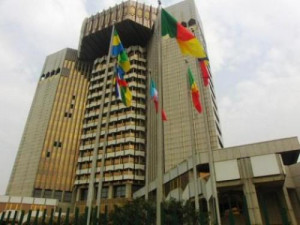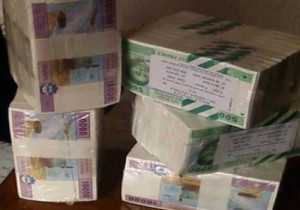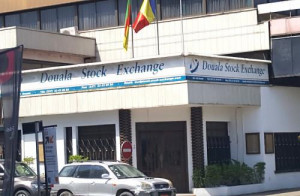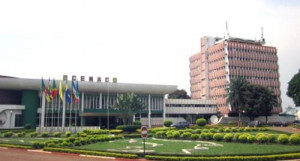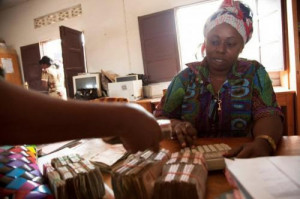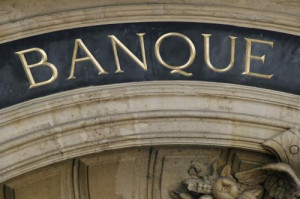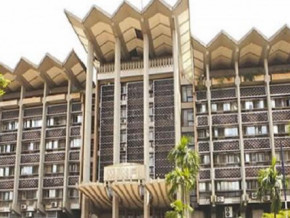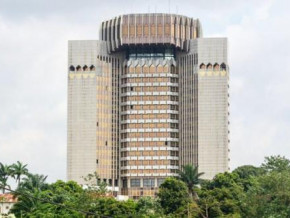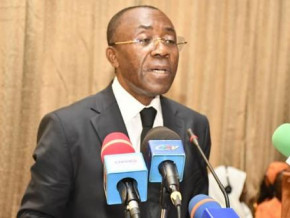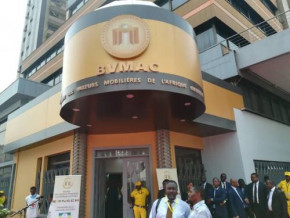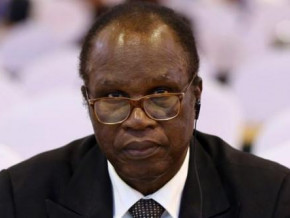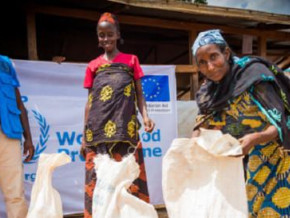
CEMAC: Beac welcomes the positive impacts of the monetary policy’s new operational framework
The Bank of Central African States (Beac) welcomes the positive effects of its new operational framework for the monetary policy within the CEMAC zone. In a memo published September 24, the bank indicated that the innovations established this year cover various areas including the money market intervention instruments and procedures, methodologies for setting intervention volumes, minimum reserves, as well as data collection, analysis and animation system of the money market by the Central Bank, etc.
“The overhaul of Beac's intervention instruments entailed a greater consistency between them and a better consideration of the various liquidity issues, in particular through the modernization of the main refinancing operation, the introduction of fine-tuning operations, standing facilities (loans and deposits), operations with longer maturity periods (1, 3, 6, 9 and 12 months) and finally, structural operations (temporary or firm purchases/sales of securities and Beac Bonds issuance),” the note stated.
Moreover, the bank said that the main liquidity injection operation, since 11 June 2018 when the new operational framework entered into force, is now conducted through a multiple rate tender. Therefore, unlike fixed-rate tenders previously conducted under the national refinancing objectives, the multiple rate tender has the advantage of encouraging credit institutions to boost their cash management. Since the proposed weekly volume can be modified from one week to the next, this approach is more demanding in terms of liquidity forecasts.
“By making market actors more responsive to monetary policy guidelines, this approach should make it possible to recycle idle resources between the guidelines and contribute to the interbank market’s development,” Beac pointed out.
Sylvain Andzongo
Cameroon: Public deficit to fall by over 3 points in 2018
In 2018, Cameroon will cut public debt by more than 3 points to only -1.2% of GDP against -2.1% of GDP initially forecasted and -4.6% in 2017. This was revealed by the Bank of Central African States (Beac) in an economic outlook.
According to the document, the country will be, alongside Gabon (-0.4% of GDP in 2018, against an initial forecast of -0.5% of GDP, and -1.9% in 2017), one of the two CEMAC countries to remain in deficit while the other four countries will either record a surplus or a balance.
In detail, “surpluses would be recorded in Equatorial Guinea (+2.1% of GDP, compared to -6.5% of GDP initially forecasted and -2.3% of GDP in 2017) and Chad (+0.6% of GDP, against -0.4% of GDP initially and -1.2% of GDP in 2017); A balance would be observed in Congo (+6.1% of GDP, after an expectation of +1.5% of GDP, compared to -5.1% of GDP last year) and in the Central African Republic (+1.0% of GDP, rather than +0.6% of GDP, compared to -1.2% of GDP in 2017),” the bank said.
The general improvement in CEMAC zone is attributable to “the increase in revenues from hydrocarbon exploitation, following a higher than expected increase in crude oil prices combined with the upward revision of oil production in some countries; and the continuing downward trend in budgetary expenditure” in some countries such as Cameroon which has a program with the IMF.
BRM
CEMAC: Net receivables grew by 25.9% in H1 2018, partly due to drawdowns in Cameroon
Over the first six months of 2018, net receivables on the six countries of the Economic Community of Central African States (CEMAC) increased by 25.9% to CFA2950.7 billion, the Central Bank (BEAC) revealed.
This growth, the bank said, is partly due to Cameroon which, at the end of 2017, drew down “the residual margin (CFA276.5 billion) on its statutory advances ceiling”. Other reasons are “the increase in credits from the International Monetary Fund (IMF)” and “the decrease in public deposits” with banks.
BRM
CEMAC: Payments balance to increase to CFA2201.9 billion in 2018
In 2018, the current account deficit of CEMAC countries will increase to 4.3% of GDP (CFAF 2201.9 billion) from 4.0% of GDP (CFA1925.1 billion) in 2017. This is revealed in the “Economic and Statistical Bulletin” published this month by the Central Bank (BEAC).
BEAC said the prolonged growth in crude oil prices and the gradual increase in production could raise the volume of CEMAC's foreign trade. In addition, the reduction in services and income balance will strongly cut the surplus in trade balance. Thus, the current account balance would remain in deficit in 2018 in all CEMAC countries.
Indeed, the current account balance is expected to reach -10.9% of GDP in 2018, compared to -8.3% in 2017 in Equatorial Guinea. In the Central African Republic, it is estimated at -7.8% of GDP in 2018, against -8.6% in 2017. In Congo, from -2.8% of GDP in 2017 to -1.1% of GDP. In Chad, -6.2% of GDP, compared to -4.7% in 2017. Gabon (-4.1% of GDP, after -4.5% in 2017) and in Cameroon (-2.6% of GDP, against -2.5% in 2017).
S. A
CEMAC: Money supply dropped by 0.4% between December 2017 and April 2018
Over the period December 2017 to April 2018, the money stock in CEMAC zone dropped by 0.4% to CFA10,556.2 billion, up from the -3% drop a year earlier. This was revealed by the Bank of Central African States (Beac) in a report on the region’s economic situation.
“This downward trend reflects the negative developments of banknotes and coins (-7.4%) and sight deposits (-1.4%), which quasi-currency growth (+7.0%) failed to offset”, the bank said.
During the period under review, the dynamics of CEMAC's main monetary aggregates were marked by a slighter decline by 3.4% in the net external assets of the low monetary system, compared with -9.3% the same period twelve months earlier. In addition, the currency's external coverage rate declined to 57.23%, reflecting a loss of 0.24 point from the level in December 2017. Net claims of the monetary system grew by 4%, while loans to the economy fell by 0.8%.
Let’s note that the six CEMAC countries include Cameroon, Central African Republic, Chad, Congo, Gabon, Equatorial Guinea and Gabon.
S.A
Cameroon could draw from Tanzania to prepare DSX for regional integration
The mobile telecommunications operators operating in Cameroon could have to introduce shares equivalent to 25% of their capital on Douala stock exchange. This is recommended in a report titled "Facilité élargie de crédit 2018-2020: comment réussir la mise en œuvre ?" (how to successfully implement the Extended Credit Facility 2018-2020) published by CAMERCAP, Cameroon’s government think tank for research on economic and social policies.
According to the think tank, Cameroon should inspire from Tanzania to prepare Douala Stock Exchange (DSX) for integration within CEMAC. In that country indeed, the government required all the mobile telecommunication operators to release 25% of their capital on the stock exchange.
By doing so, DSX will have at least ten tradeable securities. The country will also add some large companies to this group, CAMERCAP added.
It also notes the low activity in the sector and informs that only Cameroon is moving toward stock exchange integration with important assets (three equities worth CFA147.6 billion and five bonds worth CFA272.9 billion) worth CFA420.585 billion. It is followed by Gabon.
Let’s remind that by June 30, 2019, the Central African Stock Exchange based in Gabon and Douala Stock Exchange based in Douala Cameroon should merge. The headquarters of the regional stock exchange will then be moved from Libreville, Gabon to Douala, Cameroon. In the same way, the headquarters of CEMAC’s tender board will be moved from Douala to Libreville.
Sylvain Andzongo
Almost CFA1,400 billion liquidities offered by BEAC on the money market within two weeks
The Bank of Central African States (BEAC) is about to reach the threshold of CFA1,400 billion of liquidities placed on CEMAC’s money market within four weeks.
The last placement was done on July 10, 2018. In that regard, Dieudonné Evou Mekou, vice-governor of the central bank, signed a call to tender to place CFA275 billion of liquidities in the money market. The subscription will start on July 12, 2018, and be completed on July 19, 2018. For this placement, the interest rate is 2.95%.
Let’s note that this is the fifth tender launched by BEAC since June 14, 2018. Within that period, it successfully injected CFA1,120 billion. In case the CFA275 billion offered for this operation is fully subscribed to, the total amount will reach CFA1,345 billion (a little less than CFA1,400 billion) in the framework of the program initiated to push urgent liquidities in favor of banks in difficulty but deemed creditworthy.
The last operation was conducted from July 5 to 10 and the volume of liquidity offered was CFA275 billion. During that operation, the subscription rate was 123.51% or liquidity need estimated at CFA339.6 billion, within 24 hours. The minimum interest rate was 2.95%.
Earlier on June 26, 2018, the central bank placed the same volume of CFA275 billion on the money market. The following day, Désiré Guedon the secretary general announced that the volume of the subscription was CFA313.968 billion or 114.17% of the volume offered.
As for the first two operations conducted respectively on June 14 and June 21, 2018, the bank placed CFA285 billion each time. The subscription volumes were 109.1% (CFA310.9 billion) and 125.28% (CFA357.04 billion) respectively.
Sylvain Andzongo
BEAC revises CEMAC’s growth expectation to 2.5% this year
This year, the economic prospect will be positive within CEMAC thanks to the rise of basic products’ prices.
Indeed, at the end of a meeting of the administrative board of BEAC on July 4, 2018, in Yaoundé, Cameroon’s capital, the board mentioned the recovery in worldwide economic activities due to “a relative rise in the price of the main raw materials exported by Cemac countries”. There is also a continuous decrease of public investments and a rise in oil prices.
Comforted by this fact, the administrative board of BEAC estimates that the growth expectation should be 2.5% (instead of the initial 1.9%). As for the Budget surplus, based on public expenditure and donations, it will be in surplus by 0.5% of the GDP. The monetary mass is expected to grow by 7.1% and the currency's external coverage rate should stand at 60.7%.
These perspectives are in contrast to the environment in 2017 during which Cemac’s GDP real growth was zero. That year, the central bank’s budget balance and current account balance were -3% and -4% of GDP respectively. In addition, the money stock dropped by 0.4% and the currency’s external coverage rate was 57.5%.
S.A
About 700 microfinance institutions operate within CEMAC (COBAC)
By December 31, 2017, 700 accredited microfinance institutions were operating within CEMAC. According to their aggregated data, those institutions’ assets is CFA1,158 billion. This was revealed by COBAC, the banking sector’s regulatory agency within CEMAC. The total deposit in those institutions was CFA907 billion and the total loan was CFA582 billion.
The regulator explained that many of those institutions grew in constant relation with the progression of this activity within CEMAC.
However, despite this performance, the quality of the loan portfolio worsened (about CFA106 billion of bad loans). COBAC was then forced to take preventive and consolidation measures towards some of these microfinance institutions. Indeed, according to the regulator, aggregates reveal the necessity to strengthen surveillance in the sector due particularly to some counter-performances which could affect the region’s financial stability.
S.A
COBAC meets CEMAC’s bank managers to discuss issues related to international transfers
On June 27, 2018, the 10th annual meeting between managers of the lending institutions operating within CEMAC and the COBAC, the community banking sector’s regulatory agency, was organized in Yaoundé. The first theme of that meeting was “La problématique des avoirs extérieurs de la CEMAC et des transferts internationaux” (the issues of CEMAC’s foreign assets and international transfers).
Some of those lending institutions’ unorthodox practices still affect the net foreign assets position of some CEMAC member countries, BEAC’s finance and international relations manager said according to the statement published at the end of the meeting.
According to the official, most of those institutions do not comply with the rules in force. For instance, they have some practices that harm international transfers. In addition, they do not repatriate the import revenues via the zone’s central bank (BEAC).
Indeed, at the end of a crisis meeting of CEMAC member countries’ Heads of states in December 2016, those heads of states prescribed urgent measures to stop the drastic drop of CEMAC's foreign exchange reserve which was exposing the local currency to devaluation. The central bank then decided to be more stringent on the international transfers much to the disappointment of large economic operators. Some of them denounced the measure. In Cameroon for instance, the largest fish importer complained that it was no more able to pay its foreign supplier and supply the local market.
Interviewed about the issue at the end of the first meeting, for 2018, of BEAC's monetary policy's committee, Abbas Mahamat Tolli, governor of the central bank was rather comforting. “Our monetary committee has set rules for funds transfers. These rules are not a burden for economic activities. Truly, in the past, there was some permissiveness. The rules were not enforced with strictness. We now have teams who review all the transfer requests and no request is turned down without notification of the reasons why it was rejected by the central bank”, he said.
This meeting was therefore aimed at correcting this tendency banks have to ignore the rules in force as far as international transfers are concerned. The bankers and the sector’s regulatory agency discussed the processing time of transfer operations and fund repatriation. They also discussed the reason why operations related to residents’ currency accounts are rejected. The regulator also defined what is meant by unjustified assets and expressed the need for banking institutions’ coaching and support by BEAC as well as the creation of a single desk.
Brice R. Mbodiam
Mags frontpage
- Most read 7 days
- shared 1 month
- read 1 month



